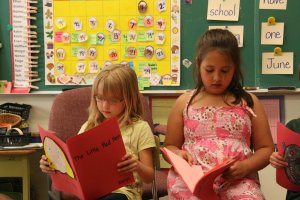In Will Richardson‘s “Why School?” he talks about the idea of learning in a time when information and ideas are available freely and easily.
” Today, if we have an Internet connection, we have fingertip, on-demand access to an amazing library that holds close to the sum of human knowledge and, equally important, to more than two billion people with whom we can potentially learn.” (Richardson, Why School?)
As has been discussed many times and in many places, our current education system is  based on an industrial model, which is designed to share a specified, already-decided body of knowledge with standardized children who can all learn at the same way at the same time (standardized tests, anyone?). Richardson is saying that this made sense in a time when information was hard to get and children needed experts to share that information.
based on an industrial model, which is designed to share a specified, already-decided body of knowledge with standardized children who can all learn at the same way at the same time (standardized tests, anyone?). Richardson is saying that this made sense in a time when information was hard to get and children needed experts to share that information.
Guess what? That’s not our children’s world. Information is NOT scarce today. It is everywhere. It is overwhelming. Do our children need a single, powerful source of information? Do they need to memorize facts so as to have them at their fingertips? Do they all need to know the same thing at the same time?
What does it take to be a successful adult today? It’s not about instant recall of facts or ability to follow directions. Today adults need to be able to find information, critically evaluate, synthesize, analyze and CREATE. It’s about finding and collating that wealth of information out there and transforming what you find into something useful. “Useful” could mean making lives easier, helping others, improving the situation, or creating art which is meaningful and makes others think and feel.
Jan Muehlfeit, the chairman of Microsoft Europe, quoted in the New York Times: “The school system is behind — we are not teaching creativity or measuring emotional intelligence. Ultimately, I believe that 70 percent of education needs to be tailored to the individual talents of the student.” This is a businessman, heading a big division in a very big company, bemoaning the fact that schools aren’t teaching creativity or emotional intelligence. Note that he is not concerned about recall facts or technical skills.
Children still need basic skills and knowledge, of course. They need guidance and practice in reading, writing, communicating, mathematics, basic principles of science, history, geography and technology. They need basic life skills. It’s our responsibility to make sure children have the tools to learn and create. That’s not the same as doling out preset bits of information.
Educating children from the perspective of abundance, of easy access to information, experts, ideas and collaborators worldwide, requires, I think, a very different mindset from what prevails in schools now. Richardson says, ” . . it’s about asking questions, working with others to find the answers, doing real work for real audiences, and adding to, not simple taking from, the storehouse of knowledge that the Web is becoming.”
He also argues that teachers need to become “networked and connected” themselves in  order to be effective teachers to our students. I think many of us are doing that in our personal lives, with smartphones, iPads, email, Facebook, and more. The challenge is to start seeing the potential of these devices in our classrooms: not to use them to do the same thing in a different way, but to use them in a transformative way, to create new learning. “The emphasis shifts from content mastery to learning mastery.” (Richardson) School as it is now is an institution totally disconnected from the demands and opportunities of the real world. Our students deserve better than that.
order to be effective teachers to our students. I think many of us are doing that in our personal lives, with smartphones, iPads, email, Facebook, and more. The challenge is to start seeing the potential of these devices in our classrooms: not to use them to do the same thing in a different way, but to use them in a transformative way, to create new learning. “The emphasis shifts from content mastery to learning mastery.” (Richardson) School as it is now is an institution totally disconnected from the demands and opportunities of the real world. Our students deserve better than that.
Check out Will Richardson’s TED Talk, or follow him on Twitter at @willrich45
If you read Why School? or watch Richardson’s Ted Talk, I’d love to hear your reactions.




 based on an industrial model, which is designed to share a specified, already-decided body of knowledge with standardized children who can all learn at the same way at the same time (standardized tests, anyone?). Richardson is saying that this made sense in a time when information was hard to get and children needed experts to share that information.
based on an industrial model, which is designed to share a specified, already-decided body of knowledge with standardized children who can all learn at the same way at the same time (standardized tests, anyone?). Richardson is saying that this made sense in a time when information was hard to get and children needed experts to share that information.
